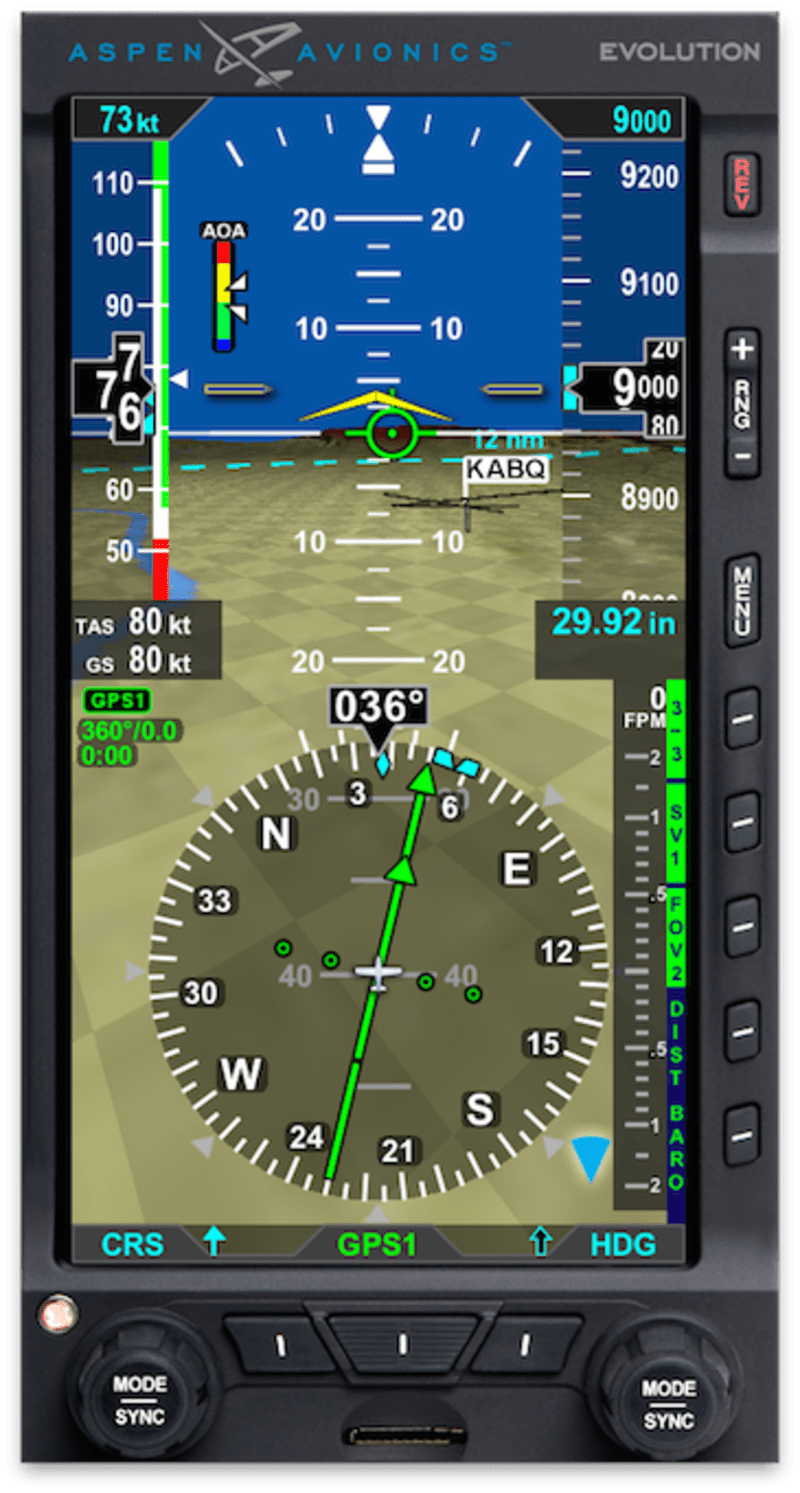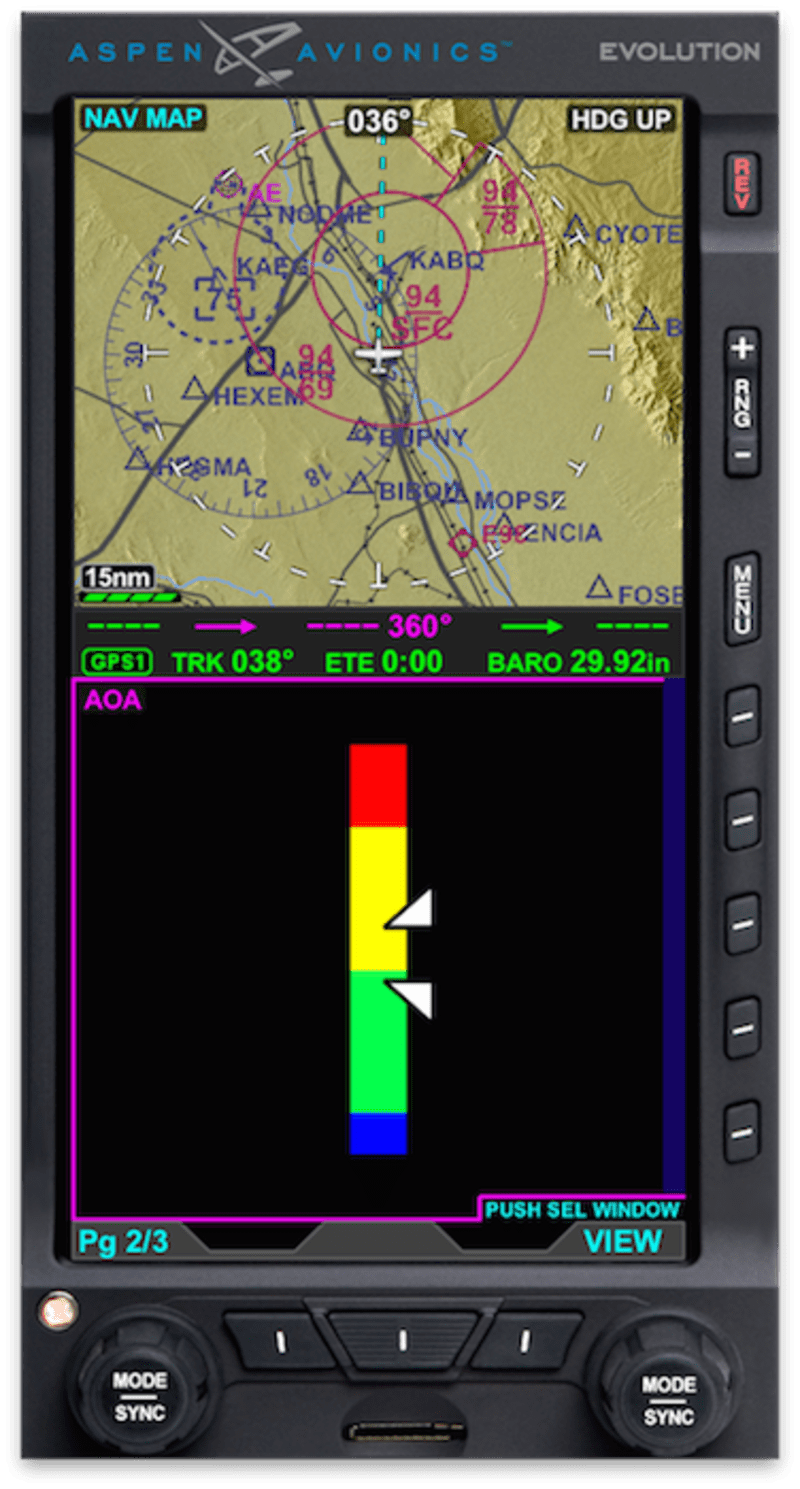


Loss Of Control In-flight (LOC-I) is the most frequent cause of General Aviation accidents and incidents. The proposed concept aims at preventing the risk of occurrence of a LOC-I by providing an indication of the current margins to aerodynamic stall conditions, the most frequent cause of LOC-I. Such indication is based on a derived aircraft angle of attack (AoA) computation and is shown to the pilot by means of a graphical interface integrated into the Primary Flight Display or the Multi-functional Flight Display. A colored vertical bar is used with two indicators that represent AoA with flaps up and flaps down configurations, in order to show instantly the energy state of the airplane in either configuration and to enable the pilot to see the available lift before changing the configuration (crucial when making a go-around).
The key innovation of the system is that it is simply a software upgrade, not requiring any dedicated AoA sensor. That is, it does not use an external appendage or a measuring systems on the outside of the airframe. These have been demonstrated to be key factors in limiting the adoption of such instruments by General Aviation pilots. A further innovation, with respect to other methods for deriving AoA, is that the proposed system does not require any detailed information of the specific aircraft. It uses several parameters easily gathered from the Pilot Operating Handbook. Other aircraft specific information is automatically obtained during a calibration flight of ten minutes.
The system is comprised of:
• One time entry of various parameters from the Pilot’s Operating Handbook
• One time calibration of an aerodynamic model of the aircraft, performed during
a calibration flight
• An algorithm utilizing an Extended Kalman Filter that merges sensor data
(accelerations, velocities, turn rates, attitude, airspeed) with the calibrated
aerodynamic model to determine the derived aircraft AoA
• Display of the derived aircraft AoA with specific ranges that indicate Safe,
Caution and Warning regions of AoA
• A monitoring algorithm to check that the system is working properly
The proposed system has the following unique features:
• No need of a dedicated AoA sensor, therefore system accuracy is not dependent
upon sensor installation on the A/C
• Suitable to be installed on every type of aircraft thanks to the calibration
process
• AoA indication based on sensors that:
o have lower noise and faster response than any other sensor used for AoA
direct measurement
o are intended for primary navigation and, as such, are more reliable than
direct AoA sensors
• Able to detect not nominal working condition that only dedicated
instrumentation could do
In conclusion, the proposed system dramatically improves general aviation aircraft safety, by providing an immediate, accurate, and a clear visual display of trend toward stall and stall margin, without requiring further sensors therefore enabling easy adoption by everyone.
The proposed concept is patent pending and the related commercial product will be put on the general aviation market by Aspen Avionics, Inc. within this summer.
Video
-
Awards
-
 2015 Aerospace & Defense Honorable Mention
2015 Aerospace & Defense Honorable Mention -
 2015 Top 100 Entries
2015 Top 100 Entries -
 2015 Top 10 Most Popular
2015 Top 10 Most Popular
Like this entry?
-
About the Entrant
- Name:Ettore De Lellis
- Type of entry:teamTeam members:Nicola Genito (CIRA)
Federico Corraro (CIRA)
Luca Garbarino (CIRA)
Dave Bibby (Aspen Avionics)
Sean Rieb (Aspen Avionics)
Kevin Jones (Aspen Avionics)
Antonio Vitale (CIRA) - Software used for this entry:proprietary environment
- Patent status:pending








